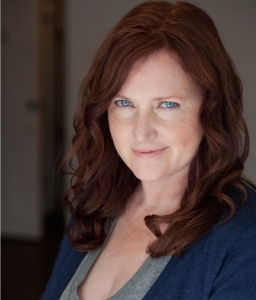You have the training to prepare you for the job. You understand who you are and how you fit into your local market. You know the characters you are able to portray as well as the types of projects that will help you achieve your ultimate career goal. Now you are ready to audition.
Of course there are non-typical avenues for gaining access to roles such as networking, recommendations, being seen in a play, nepotism. This article will focus on the typical process.
Where can I find auditions? For commercials, hosting and print, there are two primary sites on which every actor should have a profile – Casting Frontier and NowCasting (in LA, this is LACasting). For theatrical (meaning tv & film), actors will find roles on those sites and should also create a profile at ActorsAccess, which is the actor side of Breakdown Services. Because some projects and casting directors are exclusive to one platform, I encourage you to explore each and receive the free emails of ‘roles that fit’ to determine which are the best investments for you. Whether you self-submit or have representation, you must at least create a profile on each of these sites so that casting has access to your information.
What is my profile? This is your resume, headshots, list of special skills, contact info, your rep’s info, acting reel or clips (used mostly for theatrical), voiceover reel, skills clips.
How many headshots? That is a loaded question. Some casting directors will not call in an actor if they see too many headshots because they interpret this as not knowing who you are. Some casting directors have told me they want to see 8-12 pictures. Personally, I believe in efficiency and suggest using shots that say multiple things about you. Two pictures are a great starting point – one for your typical commercial character and one for your theatrical sweet spot. Beyond that, it is up to the actor (& your reps). Character actors tend to have more pictures because there is a wider range of characters that they portray. Helpful hint: keep your pictures current because casting can see the upload date and may not trust that you still look like your image from 5 years ago.
Which projects should I submit on? Depends where you are in your career. If starting out, submit for every student film, spec commercial and micro budget indie that you see. These are your opportunities to practice your audition skills and see how successful your headshots are at representing you. You do not have to say ‘yes’ to every job you are offered, so this is also good practice in learning how to say ‘no’. However, do not accept a callback if you are not interested in the job because it isn’t fair to the filmmaker. When you have been doing this a while and gained confidence in your skills, you can start auditioning with professional casting directors. Keep in mind, however, that they do not need the practice of auditioning actors, so it may not be the best idea to accept an audition with them if you cannot do the job.
Side note: Sometimes these projects hold auditions at locations other than university classrooms or casting suites. Use caution when going to auditions at unorthodox locations such as a residence. Take a friend if it will help you to feel safe.
Another side note: You’ll find that there are times in your career when you level up and stop auditioning for certain projects as you turn your energy toward the next stage of your career. It is important to refrain from audition envy and do not compare your number of auditions or bookings to others. Evaluate where you are on your journey. Keep your eye on your career goals and what you need to do to reach them.
Which roles should I submit on? The ones where you fit the description. If it calls for twins, do not say ‘I can plan both roles’. If it calls for a specific gender or race or age that does that not fit you, trust that any limitations on the description are for a reason. Your age range for camera is typically 5-7 years (unless you are a celebrity and then Matt Damon can play 16). If a commercial role calls for someone who actually uses a product or has an illness, do not submit unless it is true for you. If you are 6′ tall, you cannot sit on a stool to play a 4′ character. Trust that there is enough work out there.
What should I put in the notes section of my submission? Usually, nothing. Do not write ‘thank you’. Do not send a link to your reel or website. Casting doesn’t have time to click a link. Either upload the digital file to your profile or don’t. But sending unsolicited links looks unprofessional. The only thing you should include is something that will help casting see you in the role. Such as ‘4 yrs in military’, ‘Russian native’, ‘black diamond skier’, ‘flair bartender’. These are things which might be in your special skills but should be highlighted when they qualify you for the role.
~~~~~~~~
I hope these tips are helpful as you submit for projects. And I’d love to hear your questions or comments.
